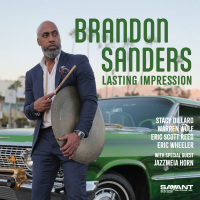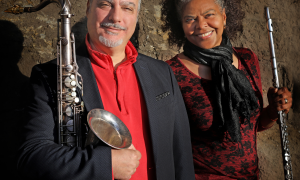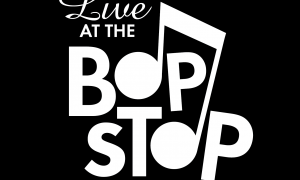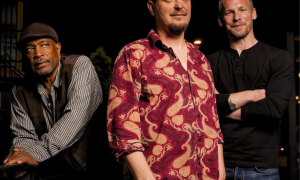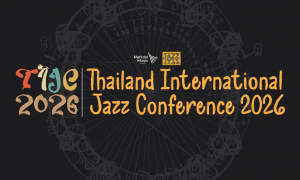When the CD format came out, fans upgraded their LP collections, igniting a boom in sales that lasted from 1984 to 2000. When the MP3 format trickled up from the tech-geek community, fans ripped their CDs to their computers and downloaded free digital files of the web, causing a decline in sales that has lasted from 2000 until present day. Oops. Some fans have re-bought their music collections several times now.
The Beatles are a great example of this.
Most fans have owned their music on every single format—aside from maybe the phonograph—and yet upon being released to iTunes, over two million MP3s sold.
No one who is a Beatles fan needed to buy their music in the new format, as they likely had found ways to get the fab-four on their iPod, but they did anyways.
New Cycles
En masse though, as Forrester analyst Mark Mulligan suggests, the MP3 has failed to generate a format replacement cycle. Fans didn't race to upgrade their music collections as they have in the past. And they may never do so again.
This is problematic, as a substantial portion of revenues and resurgences in the music industry have been caused by fans replacing their music collections.
As interest in digital music wanes, it's worth asking if we'll see another format replacement cycle generated anytime soon. And if so, what format will it be?
It appears as though the days of a singular format are numbered.
By my count, there are six music formats right now that seek to challenge the rein of the MP3. A few of them aren't as much of a format as much as they are a delivery tool, but I'm counting them. For example, a flash drive is just a storage device that holds music, but in recent years, many groups have sold them.
MP3 Competitors
Here is a look through the MP3 competitors:
None of these formats have generated a format cycle of their own. But you could argue that each meets the demands of a broader spectrum of audience.
Rather than a single format being available to every fan, in the exact same packaging, several formats can now be experimented with at once.
Lacking SPARC
From the perspective of Mulligan, future music products need SPARC:
A few of these formats have these characteristics, but not all of them. As we're learning, the young and the digital have different needs than their older peers.
Solely offering them MP3s, CDs, vinyl, or tapes for sale isn't enough.
Unlike their parents, the young and the digital may not buy an LP and turn around and buy a CD with the exact same music a few years later. They are only willing to purchase the same music if the right experience — like a video performance or a fan remix—is tied in. They may buy the digipak and app, but not just to update.
The CD boom lasted roughly sixteen years. iTunes has been selling digital music for eight years and is already showing signs of cooling off. If the MP3 has failed to produce a format replacement cycle, will any of these new formats do any better?
The CD saved the music industry from itself. This time around though, it appears as though it will take more than one music format replacement cycle to do so.
The Beatles are a great example of this.
Most fans have owned their music on every single format—aside from maybe the phonograph—and yet upon being released to iTunes, over two million MP3s sold.
No one who is a Beatles fan needed to buy their music in the new format, as they likely had found ways to get the fab-four on their iPod, but they did anyways.
New Cycles
En masse though, as Forrester analyst Mark Mulligan suggests, the MP3 has failed to generate a format replacement cycle. Fans didn't race to upgrade their music collections as they have in the past. And they may never do so again.
This is problematic, as a substantial portion of revenues and resurgences in the music industry have been caused by fans replacing their music collections.
As interest in digital music wanes, it's worth asking if we'll see another format replacement cycle generated anytime soon. And if so, what format will it be?
It appears as though the days of a singular format are numbered.
By my count, there are six music formats right now that seek to challenge the rein of the MP3. A few of them aren't as much of a format as much as they are a delivery tool, but I'm counting them. For example, a flash drive is just a storage device that holds music, but in recent years, many groups have sold them.
MP3 Competitors
Here is a look through the MP3 competitors:
- High-Quality Download. As music becomes cheaper to transfer over the web, it's inevitable that higher quality downloads will be offered. Some places sell them, but iTunes doesn't yet. One of the main gripes about the MP3 has always been the quality of its sound. One day, this will be fixed.
- Dynamic Music Download. Recently, MusicDNA and others have sought to amend the poor consumer experience of the MP3 by bundling it with lots of interactive content like lyrics and video. These MP3s will be able to update themselves and keep fans in the loop long after the initial purchase. This could be the biggest marketing advance in music—ever—but only if it catches on and fans perceive it to be worth the extra money.
- Music URL. Between Viinyl, Spotify, and TinySong the URL may very well become the universal music format. Rather than buying a download and playing it on your digital device, you will just click a URL and it will play. Unfortunately, this format is funded by ads, not hard cash. And that's to say nothing about the fact that fans bookmark, not collect music URLs.
- USB Drives. In 2008, Bullet For My Valentine released their album on a bullet shaped USB drive. They weren't the first to do this, but the example sticks out. This summer, Killola took this concept a step further by offering a USB dogtag that contained all of their music and exclusive updates once it was plugged into a computer. The rock group Killola also made it so that their new songs could be distributed out to fans that bought the dogtags.
- Music Apps. “Apps are the future of music," writes Eliot Van Buskirk of Evolver.fm. He deemed them “the second major development in the digital music revolution." Apps hold the same promise of the dynamic download in terms of their capacity to be updated and contain extra media content.
- Video Albums. Alan Lastufka & Luke Conard, the founders of DFTBA Records, have released a great Video LP titled Erase This. Both of them are long-time and active YouTube contributors, so it only makes sense for them to release their album in a video format. The album has a short intro and from that point; any song can be skipped to within the in-video menu.
None of these formats have generated a format cycle of their own. But you could argue that each meets the demands of a broader spectrum of audience.
Rather than a single format being available to every fan, in the exact same packaging, several formats can now be experimented with at once.
Lacking SPARC
From the perspective of Mulligan, future music products need SPARC:
- Social: put the crowd in the cloud.
- Participative: make them interactive and immersive.
- Accessible: ownership still matters but access matters more.
- Relevant: co-exist and joint the dots in the digital environment.
- Connected: fans expect their music experiences to be also.
A few of these formats have these characteristics, but not all of them. As we're learning, the young and the digital have different needs than their older peers.
Solely offering them MP3s, CDs, vinyl, or tapes for sale isn't enough.
Unlike their parents, the young and the digital may not buy an LP and turn around and buy a CD with the exact same music a few years later. They are only willing to purchase the same music if the right experience — like a video performance or a fan remix—is tied in. They may buy the digipak and app, but not just to update.
The CD boom lasted roughly sixteen years. iTunes has been selling digital music for eight years and is already showing signs of cooling off. If the MP3 has failed to produce a format replacement cycle, will any of these new formats do any better?
The CD saved the music industry from itself. This time around though, it appears as though it will take more than one music format replacement cycle to do so.






